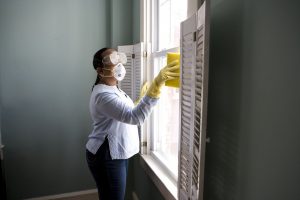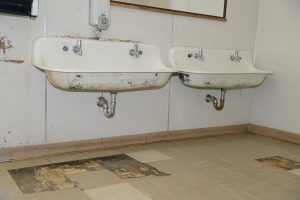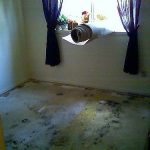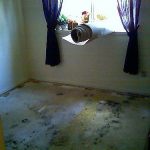
Except for grabbing and storing your cleaning supplies, there are not many reasons to open the cabinet under the sink. The majority of us don’t keep a light under there either. This could also explain that musty smell in the back; you probably have mold.
No matter where it is growing on the property, mold growth is very dangerous, especially when cleaning. It can trigger a number of allergies and respiratory problems that can affect everyone in the home or building. Even if you have tried removing previously, it can still grow back because the source was not completely removed.
Mold cleaning projects can take anywhere from a few hours to a few days of thorough cleaning to ensure that all spores are removed. Many property owners simply don’t have the time or would rather hire a professional mold remediation service do it for them for the peace of mind. However, if you feel that the case is manageable, you can follow these steps on how to get rid of the mold under your sink.
How to Remove Mold Under Sink
-
- Wear proper protection. As you are aware of the dangers mold poses to your health, it is crucial to wear the proper clothing and equipment when taking on this cleaning project, no matter how small it may be. In addition to wearing old clothing that covers your entire body, put on a breathing mask, rubber gloves, and proper eyewear to prevent direct contact with the spores.
- Turn on a fan or dehumidifier. Prevent the mold from affecting other areas of your home by eliminating the moisture in the air.
- Clear out the space. If you have found any contents that have mold growth on them, don’t hesitate to dispose of them right away. Then remove the others to give yourself as much space as possible.
- Find the source. Finding the source of the damage will prevent the mold from coming back in the future. If there is a leaking pipe, hole in the wall, old garbage disposal lines, or any other moisture source, remove it first to prevent the fungus from spreading. If you find a problem within the pipes that is causing the problem, clean the mold first, and then call a licensed plumber.
- Use proper chemicals to remove mold. Unless if you prefer professional products to penetrate and remove the mold at the source, you can try these home remedies to remove the fungus.
- White vinegar: Try mixing this with water before applying the entire thing. If not, you can just use the cleaner. You can even spray this and other areas to prevent mold from growing in the future.
- Baking soda: Add 1 teaspoon for every cup of water to remove the mold without harming the surface. To make it more powerful, you can use white vinegar instead of water.
- Bleach: This will only work on hard, non-porous surfaces, but you can add a cup of bleach to a gallon of water to use on the affected area.
- Wait 10 minutes. Allow the cleaning solution to penetrate the mold’s surface before scrubbing it in with a bristle brush.
- Rinse the area. After scrubbing the area and you are sure the mold is removed, rinse it thoroughly and set up an area fan to dry it out.
- Inspect the area later. If you find that the mold is growing back, the source is probably located underneath the floor or wall boards. Then it is time to call the professionals.
Leave it to the Professionals
Some mold cases can be DIY cleanup jobs while others will be much more difficult to remove. If you have tried everything and still can’t remove the fungus yourself, allow a professional mold remediator to handle the job, such as ServiceMaster.
Each technician has years of experience and will apply commercial products to remove the mold effectively. They will also remove the source of the damage while securing all affected areas from future growth. They are also licensed to perform water damage restoration if this is cause for the mold growth in your case. Don’t hesitate to call these technicians to have your building materials restored to their original conditions.






